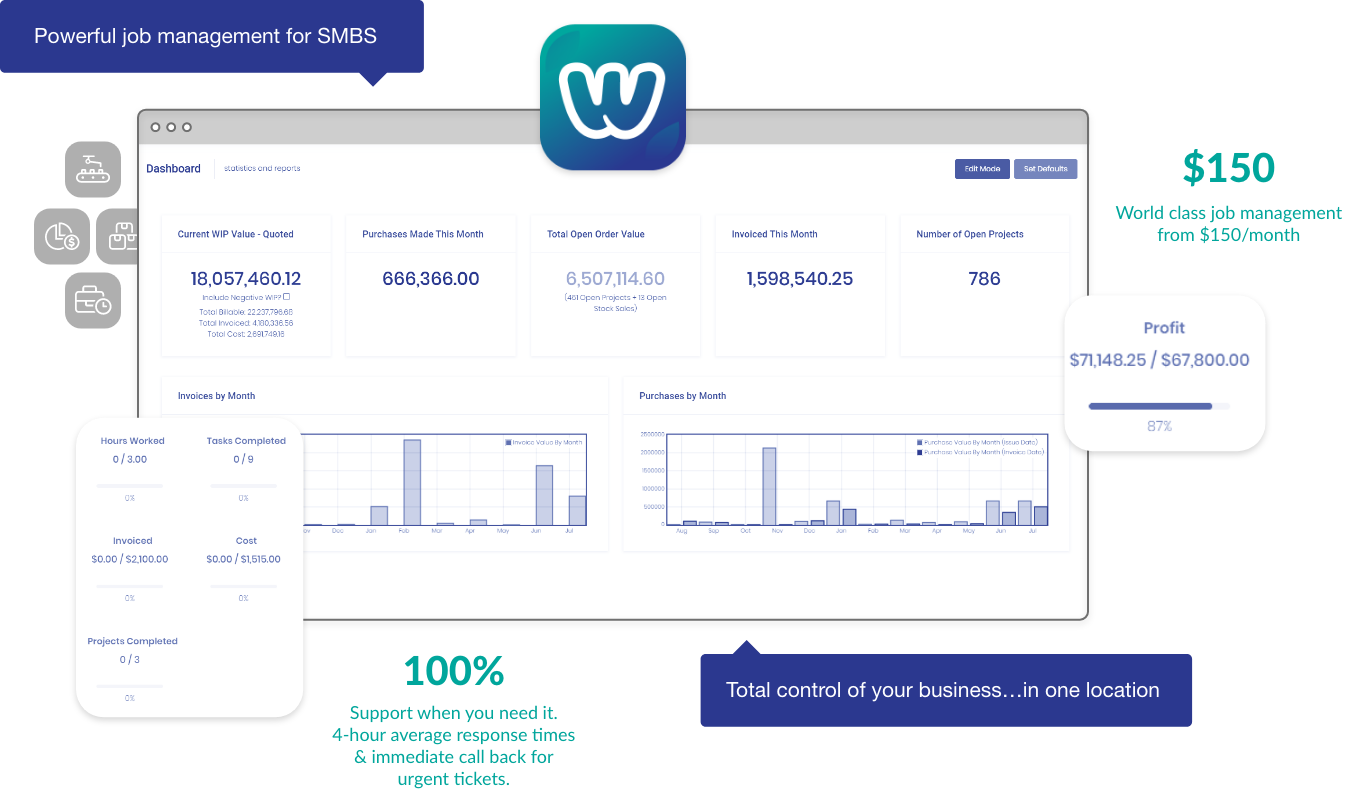
Image Source: Google
In today's fast-paced business environment, efficiency is key to staying competitive and meeting customer demands. One way to streamline your workflow and improve productivity is by implementing a job management system.
This powerful software solution can help you organize tasks, allocate resources, track progress, and communicate effectively with your team. In this article, we will explore the benefits of a job management system and how it can transform your workflow for the better.
The Benefits of a Job Management System
1. Centralized Task Management
- A job management system provides a centralized platform where you can create, assign, and track tasks for your team.
- Tasks can be categorized, prioritized, and organized based on deadlines and dependencies.
2. Resource Allocation
- You can easily allocate resources such as manpower, equipment, and materials to specific tasks within the system.
- This ensures that resources are utilized efficiently and that work is evenly distributed among team members.
3. Real-Time Progress Tracking
- With a job management system, you can track the progress of tasks in real-time and identify any bottlenecks or delays.
- This allows you to make informed decisions and take corrective actions to keep projects on track.
4. Improved Communication
- Effective communication is crucial for successful project delivery. A job management system facilitates communication by providing a centralized platform for team members to collaborate and share updates.
- You can assign comments, attach files, and send notifications to keep everyone in the loop.
Key Features of a Job Management System
1. Task Scheduling
- Set deadlines, milestones, and dependencies for tasks to create a comprehensive project timeline.
- Visualize task schedules and resource allocations with Gantt charts for better planning.
2. Reporting and Analytics
- Generate reports on task progress, resource utilization, and project performance to gain insights into your workflow.
- Analyze data to identify trends, forecast future workloads, and optimize resource allocation.
3. Customizable Workflows
- Adapt the job management system to suit your unique workflow and project requirements.
- Create custom task templates, workflows, and approval processes to standardize operations and improve efficiency.
4. Integration with Other Tools
- Integrate the job management system with other essential tools such as calendars, email clients, and project management software.
- This ensures seamless data sharing, eliminates duplicate data entry, and improves overall productivity.
Implementing a Job Management System
Now that you understand the benefits and key features of a job management system, it's time to consider how to implement this powerful tool in your workflow. Here are some steps to help you get started:
1. Identify Your Needs
- Assess your current workflow and identify areas where a job management system can bring the most value.
- Determine the key features and functionalities that are essential for your team's success.
2. Choose the Right System
- Research different job management systems available in the market and choose one that aligns with your requirements.
- Consider factors such as ease of use, scalability, customization options, and integration capabilities.
3. Provide Training and Support
- Ensure that your team receives adequate training on how to use the job management system effectively.
- Provide ongoing support and guidance to help team members adopt the new tool and maximize its benefits.
4. Monitor and Evaluate
- Regularly monitor the usage and performance of the job management system to identify areas for improvement.
- Solicit feedback from your team to understand their experience and make adjustments as necessary.
By following these steps and leveraging the capabilities of a job management system, you can transform your workflow, boost productivity, and achieve greater efficiency in your projects. Mastering efficiency is no longer a distant goal but a tangible reality with the right tools and strategies in place.